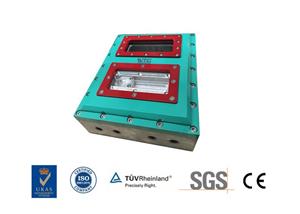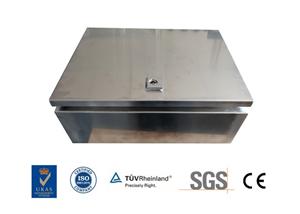Shot peening technology of gear surface
1. Shot peening treatment can improve the stress distribution on the surface of the part
The residual stress after shot peening comes from the uneven plastic deformation of the surface layer and the phase transformation of the metal structure, among which the uneven plastic deformation is the main cause. After shot peening, a large number of plastic deformations in the form of pits are produced on the metal surface, the dislocation density of the surface layer is greatly increased, and the phenomenon of sub-grain boundaries and grain refinement appears. After shot peening, part of the retained austenite on the surface of the gear will become martensite, and compressive stress will be generated due to the volume expansion during phase transformation, so that the retained austenite field on the surface will change toward greater compressive stress. Improve the fatigue strength of gears. Through shot peening, the heat treatment stress can be eliminated, the surface oxide scale can be removed, the notch sensitivity of the parts can be improved, and the residual stress that is prone to part failure can be converted into compressive stress, effectively limiting the generation and expansion of crack sources, and a large extent Improve the fatigue life of parts.
2. Shot peening can form a high compressive stress layer on the surface of the workpiece
Because shot peening increases the surface compressive stress and significantly improves its fatigue performance, it is more effective for workpieces that bear high-frequency fatigue loads. The residual compressive stress formed by shot peening can offset part of the applied load. During shot peening, small-sized spherical steel shots hit the surface of the workpiece to form a compressive stress. The impact of each shot will cause the metal to produce a certain degree of plastic deformation, and the surface cannot be completely recovered and a permanent compressive stress state is formed. As a surface strengthening process, shot peening can form a residual compressive stress on the surface which is equivalent to 55% to 60% of the material's tensile strength limit, and the surface of the workpiece is where cracks are likely to occur. For carburized and hardened gears, the resulting compressive stress can reach 1177~1725MPa, which can greatly improve the fatigue performance. The depth of the compressive stress layer is a function of shot peening strength (or shot peening energy) and increases as the size or velocity of the shot increases.
3. Shot peening process parameters
The shot peening process has higher requirements on the shape, size and hardness of the shot. The shot peening strength and surface coverage are used to control the shot peening process, and the residual stress and fatigue test are used to detect the surface strengthening effect.
Shot peening process parameters include shot material, shot diameter, shot speed, shot flow, shot angle, shot distance, shot peening time and coverage, etc. The change of any one of these parameters will affect the shot peening strength to varying degrees, that is, the strengthening effect .
Arc height test piece
The standard ALMEN arc high test piece is a special gauge for comprehensive evaluation of the process parameters of shot peening. It is made of No. 70 spring steel and has three specifications, coded as N, C, and A, respectively, which are used in 3 different occasions with different shot peening strength requirements.
Arc height curve
The arc height curve is that the shot peening arc height of the same test piece changes with the shot peening time (or shot peening times) under the condition that other process parameters are fixed, marking the curve of the arc height value-time relative relationship.
Shot peening strength
Shot peening strength usually adopts the arc height measurement method. The main point is to use a certain spring steel test piece to reflect the shot peening effect by detecting the shape change after the shot peening strength. The specific operation is to use the Almen test piece (arc height test piece) , The general hardness is 44~50HRC), fixed on the fixture, after projecting shot peening, remove the test piece, and then measure the height of the curved arc with a gage (such as an Almen measuring instrument).
Another inspection method of shot peening strength is residual stress inspection, which is to inspect the residual stress of the workpiece after strengthening shot peening. The specific inspection method is X-ray diffraction.
Surface coverage
Coverage rate refers to the ratio of the surface area of the projectile indentation to the surface area of the workpiece after being shot peened. Usually expressed as a percentage. The key point of the measurement is to put the Almen test piece after shot peening about 50 times to measure the area of the shot indentation. Because it is very difficult to guarantee 100% coverage, 98% coverage is actually defined as full coverage. 300% coverage of product patterns is required, usually three times the shot peening time required to achieve 98% effective coverage.
Projectile quality
The quality of the projectile has a great influence on the strengthening effect. The general rule is: the diameter of the projectile is small, the residual stress on the surface of the workpiece is higher, but the strengthening layer is shallow; the diameter of the projectile is large, the residual stress on the surface of the workpiece is lower, but the strengthening layer is deeper; the hardness of the projectile is high , The shot peening strength is also high; the diameter of the shot increases, the shot peening strength also increases; the shot speed increases, the shot peening strength, the surface compressive stress and the depth of the strengthening layer increase.
Shot peening time
Under the condition that other shot peening process parameters remain unchanged, shot peening can only achieve the best strengthening effect when it reaches the "saturation" time or twice the "saturation" time. Usually, insufficient strengthening time is more disadvantageous than excessive strengthening time. Therefore, when it is found that the strengthening time is less than the specified time, the workpiece can be supplemented and strengthened again.




